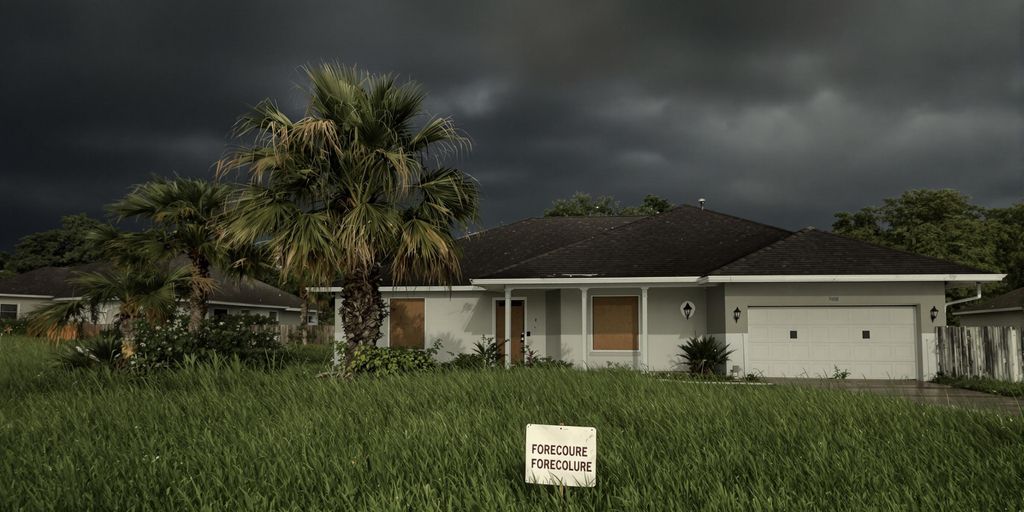Florida’s housing market is showing significant signs of cooling, with several major cities facing potential price crashes and slumps. Increased inventory, rising insurance costs, and a slowdown in buyer demand are transforming what was once a red-hot seller’s market into a more favorable environment for buyers, though with risks for current homeowners.
Florida’s Housing Market Cools Down
The Sunshine State’s real estate market, which experienced explosive growth in recent years, is now undergoing a significant correction. Data from April 2025 indicates a statewide average appreciation dip of -0.8%, a stark contrast to the rapid price increases seen previously. This shift is largely attributed to an affordability breaking point, increased inventory, and a cooling of migration trends.
Key Takeaways
- Buyer’s Market Emerges: Cities like Miami, Tampa, Jacksonville, West Palm Beach, Fort Lauderdale, and Orlando are transitioning into buyer’s markets, characterized by more homes for sale than active buyers. This gives buyers increased negotiation power and more options.
- High Vacancy Rates: Cape Coral, North Port, and Lakeland exhibit the highest vacancy rates in Florida, driven by new construction outpacing demand. While this offers buyers more choices and potential for lower prices, it could also lead to slower appreciation and concerns about community stability.
- Price Decline Risk: Five Florida markets are identified as having a "very high risk" of major price declines:
- Cape Coral, FL
- Lakeland, FL
- North Port, FL
- St. Petersburg, FL
- West Palm Beach, FL
Factors Contributing to the Slump
Several interconnected factors are driving the current downturn:
- Affordability Issues: Despite recent dips, home prices remain significantly higher than pre-pandemic levels. Coupled with elevated mortgage interest rates, many potential buyers are priced out of the market.
- Increased Inventory: As demand wanes, homes are staying on the market longer, leading to a surge in available properties. This increased supply shifts leverage from sellers to buyers.
- Rising Costs of Ownership: Skyrocketing homeowner’s insurance premiums, particularly in coastal areas, and increasing property taxes are adding substantial burdens to homeownership, making Florida less attractive for some.
- Investor Pullback: Higher interest rates and the prospect of falling prices are making real estate investments less appealing, reducing a key source of demand that fueled the previous boom.
- Condo Market Challenges: The South Florida condo market is experiencing a significant slump, partly due to new upkeep requirements following the 2021 Surfside condominium collapse, making older units harder to sell.
Regional Impacts
- Southwest Florida: Areas like Cape Coral and North Port, which saw explosive growth, are now experiencing sharp declines and high vacancy rates.
- Tampa Bay Area: Tampa’s market has cooled, with a median home price down about 1% from April 2024, indicating a clear shift to a buyer’s market.
- South Florida: Miami-Dade, Broward, and Palm Beach counties have seen a marked decline in sales dollar volume. Condo sales have been particularly hard hit, with significant drops in closings.
Outlook for Buyers and Sellers
For buyers, the current market presents opportunities for negotiation and a wider selection of properties. However, due diligence is crucial, including understanding local market trends and factoring in the total cost of ownership. For sellers, particularly in high-risk markets, pricing homes correctly based on current conditions is paramount, and they should be prepared for longer market times and potential negotiations.
Sources
- 3 Florida Housing Markets Having the Highest Vacancy Rates, Norada Real Estate Investments.
- Florida markets Miami, Tampa, Jacksonville lead top buyer’s markets: Report, wtsp.com.
- Housing Scorecard: Inventory rises across South Florida, South Florida Agent Magazine.
- 5 Popular Florida Housing Markets Are at High Risk of Price Crash, Norada Real Estate Investments.
- South Florida’s residential market is in a months-long slump, New York Post.


